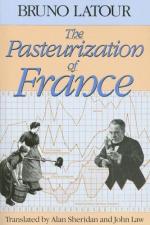|
This section contains 502 words (approx. 2 pages at 300 words per page) |

|
The pasteurization of milk is a process of slow heating to kill bacteria and other microorganisms in order to make milk safe for human consumption. During the process many pathogenic bacteria are destroyed including Mycobacterium Tuberculosis tuberculosis, one of the most heat-tolerant pathogenic bacteria that does not form protective spores. Other bacteria, encapsulated in spores, may not be destroyed and thus pasteurized milk should still be refrigerated. During the heating process (at 143.1°F [61.7°C] for a period of at least 30 minutes) some food value of certain vitamins and proteins is lost, but the possibility of spreading bacteria with the potential of causing disease is lessened substantially.
Named for its inventor, nineteenth-century French microbiologist Louis Pasteur (1822-1895), pasteurization was originally begun as a way of keeping wine and beer from turning sour. Pasteur's research led him to believe that during the fermentation of alcoholic beverages...
|
This section contains 502 words (approx. 2 pages at 300 words per page) |

|


